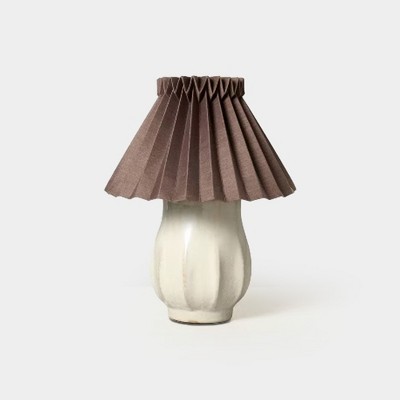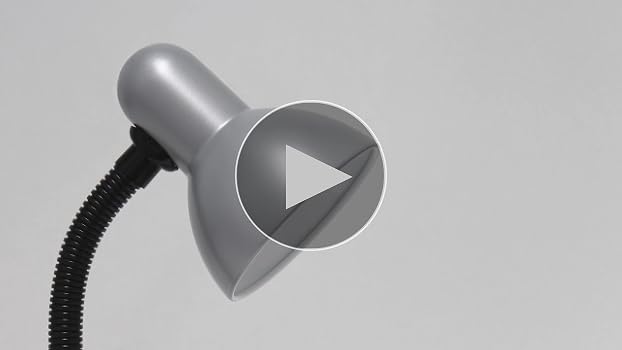Have you ever wondered how much it really costs to keep your desk lamp on? You might think it’s just a small expense, but those little lights can add up over time.
Understanding the true cost can help you make smarter choices and save money on your electricity bill. You’ll discover exactly what affects the cost of running your desk lamp and simple tips to reduce it without sacrificing your comfort. Keep reading to find out how to light up your workspace without burning a hole in your pocket.
Factors Affecting Desk Lamp Costs
Several factors influence the cost of running a desk lamp. Understanding these can help manage electricity bills better. Each element affects energy use and overall expenses differently.
Lamp Wattage And Energy Use
The lamp’s wattage shows how much power it consumes. Higher wattage means more energy use and higher costs. LED lamps use less power than traditional bulbs. Choosing a lamp with low wattage saves money over time.
Usage Duration And Frequency
How long and how often you use the lamp impacts costs. Using a desk lamp for many hours daily raises electricity use. Shorter, less frequent use lowers the total energy consumed. Tracking usage helps control spending.
Electricity Rates Variations
Electricity prices differ by location and provider. Some areas have higher rates, increasing lamp running costs. Rates may change based on time of day or season. Checking your electricity plan helps estimate expenses accurately.

Credit: www.amazon.com
Calculating Desk Lamp Energy Consumption
Understanding how much energy your desk lamp uses helps manage electricity costs. Calculating energy consumption involves simple math. This process shows how daily use affects your power bill.
Estimating Daily Power Usage
First, find the lamp’s wattage. It is usually on the bulb or lamp label.
Multiply the wattage by hours used per day. This gives daily energy use in watt-hours.
For example, a 10-watt lamp used for 5 hours uses 50 watt-hours daily.
Monthly And Yearly Cost Breakdown
Convert watt-hours to kilowatt-hours (kWh) by dividing by 1,000.
Multiply kWh by your local electricity rate (cents per kWh).
This gives daily cost. Multiply by 30 for monthly and 365 for yearly cost.
| Usage | Calculation | Example (10W lamp, 5 hours, $0.12/kWh) |
|---|---|---|
| Daily kWh | (Wattage × Hours) ÷ 1000 | (10 × 5) ÷ 1000 = 0.05 kWh |
| Daily Cost | Daily kWh × Rate | 0.05 × $0.12 = $0.006 |
| Monthly Cost | Daily Cost × 30 | $0.006 × 30 = $0.18 |
| Yearly Cost | Daily Cost × 365 | $0.006 × 365 = $2.19 |
Using Online Energy Calculators
Energy calculators simplify these calculations. Enter wattage, hours used, and cost per kWh.
They provide instant daily, monthly, and yearly cost estimates.
Some calculators also compare different bulbs and lamps for cost efficiency.
Energy-efficient Desk Lamp Options
Choosing an energy-efficient desk lamp can save money and reduce energy use. These lamps provide adequate lighting while lowering electricity bills. With many options available, selecting the right lamp requires understanding different features and benefits. Here are some energy-efficient desk lamp options to consider.
Led Vs Incandescent Bulbs
LED bulbs use less energy and last longer than incandescent ones. They emit less heat, providing a cooler light source. Incandescent bulbs consume more electricity and have shorter lifespans. Switching to LED can significantly cut energy costs. They are available in various brightness levels and colors.
Smart Lamps With Auto Shutoff
Smart lamps offer convenience and energy savings. These lamps have sensors that detect when no one is around. They automatically turn off, reducing unnecessary electricity use. Some models allow remote control through smartphone apps. This feature helps manage energy consumption effectively.
Solar-powered Desk Lamps
Solar-powered lamps use sunlight, making them eco-friendly. They charge during the day and provide light at night. These lamps are ideal for areas with ample sunlight. No electricity costs involved, lowering overall expenses. They contribute to sustainable living by harnessing renewable energy.

Credit: www.target.com
Tips To Reduce Desk Lamp Energy Costs
Reducing energy costs for your desk lamp can save money and help the environment. Small changes in how you use the lamp make a big difference. Focus on smart placement, smart controls, and the right brightness. These tips keep light where you need it without wasting power.
Optimizing Lamp Placement
Place your desk lamp close to your work area. This reduces the need for extra light. Avoid shining the lamp on empty spaces or walls. Use reflective surfaces like white desks or walls to spread light better. Proper placement means less energy used for the same brightness.
Using Timers And Motion Sensors
Timers can turn off the lamp automatically after a set time. This stops the light from staying on when not needed. Motion sensors detect when you leave the desk and switch the lamp off. These tools prevent waste and lower your electricity bill without effort.
Choosing The Right Brightness Level
Select a brightness setting that fits your task. Bright light helps reading or writing but lowers energy use if not too strong. LED bulbs offer adjustable brightness with less power use. Dim the lamp when full brightness is not required to save energy.
Impact Of Desk Lamp Energy Use On Environment
Desk lamps use electricity to work, and this energy use affects the environment. The power for these lamps often comes from burning fossil fuels. This process releases greenhouse gases, which cause climate change. Even small appliances like desk lamps add to this impact. Understanding their energy use helps us reduce harm to the planet.
Reducing Carbon Footprint
Lowering the energy used by desk lamps cuts carbon emissions. Using LED bulbs instead of incandescent ones saves energy. LED bulbs use up to 75% less electricity. Turning off the lamp when not needed also helps. Choosing lamps with energy-saving features reduces environmental impact. These small actions add up to a big difference over time.
Benefits Of Energy Savings
Saving energy reduces electricity bills. It also lowers demand on power plants, decreasing pollution. Less energy use means fewer harmful gases released into the air. This improves air quality and helps protect wildlife habitats. Energy savings support a cleaner, healthier environment for everyone.

Credit: www.johnlewis.com
Frequently Asked Questions
How Much Electricity Does A Desk Lamp Use Daily?
A typical desk lamp uses about 10 to 60 watts per hour. Running it for 5 hours daily consumes 50 to 300 watt-hours. This means a low-wattage LED lamp costs less to operate than traditional bulbs, saving energy and money.
What Affects The Cost To Run A Desk Lamp?
The cost depends on the bulb type, wattage, and usage time. LED bulbs use less power than incandescent ones. Electricity rates in your area also impact the cost. Longer usage increases overall expenses, so consider energy-efficient bulbs.
Are Led Desk Lamps Cheaper To Operate?
Yes, LED desk lamps are more energy-efficient, using up to 80% less power. They last longer and reduce electricity bills. Although LED lamps may cost more upfront, their lower running costs save money over time.
How To Calculate Desk Lamp Running Costs?
Multiply the lamp’s wattage by hours used daily, then divide by 1000 for kilowatt-hours. Multiply this by your electricity rate to find daily cost. This simple formula helps track and manage your desk lamp expenses efficiently.
Conclusion
Running a desk lamp does not cost much. The main cost comes from electricity use. Using energy-saving bulbs can cut costs a lot. Turning the lamp off when not needed saves money too. Small changes make a big difference over time.
Understanding these costs helps you manage your bills better. Keep your desk well-lit without worrying about high expenses. Simple steps keep your energy use low and your wallet happy.





